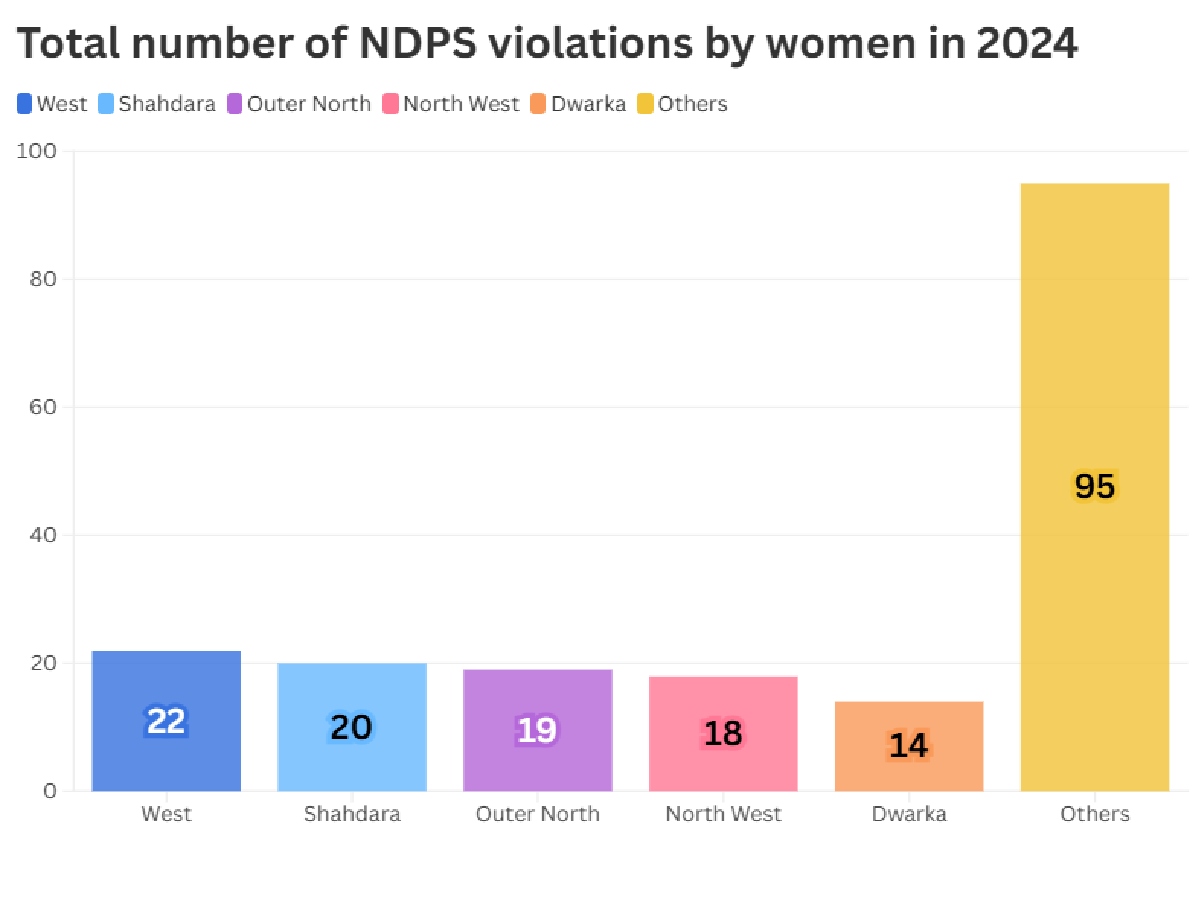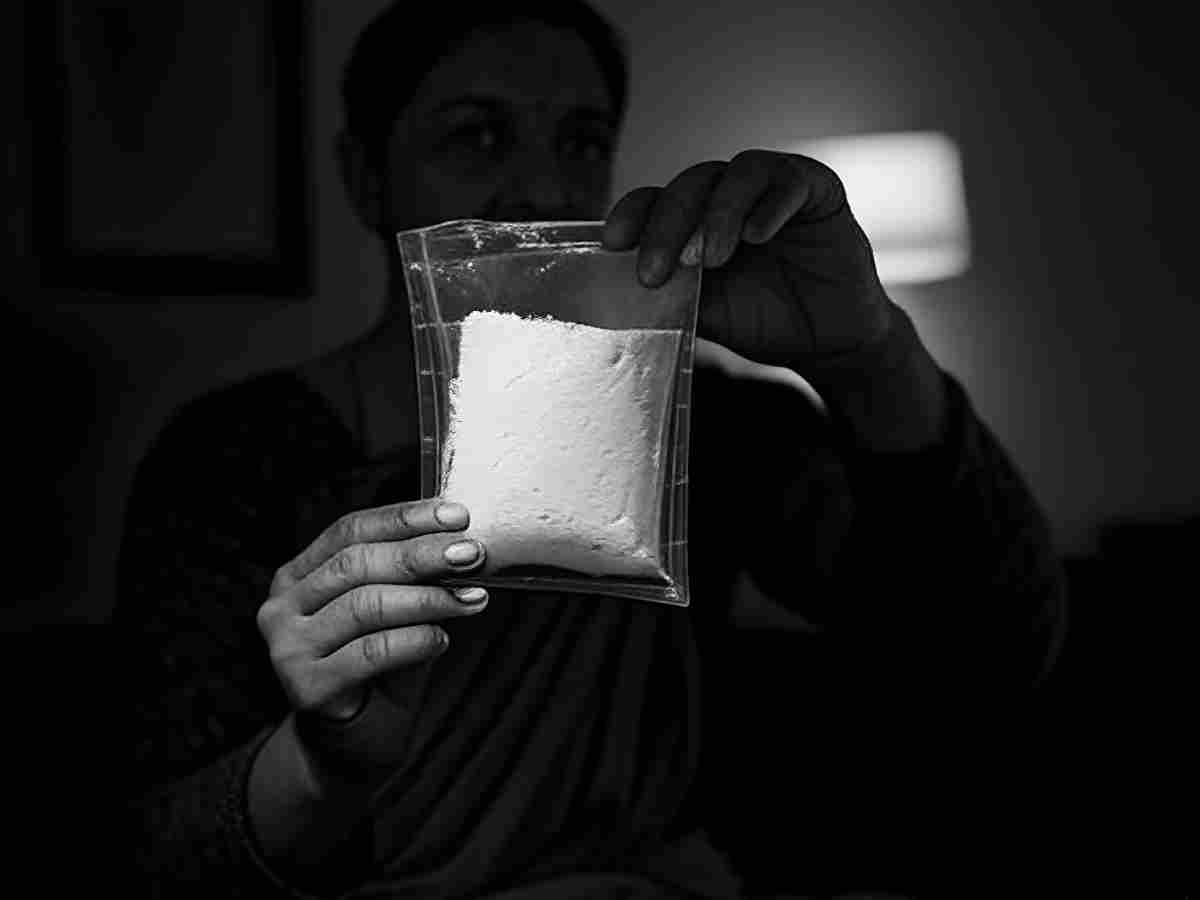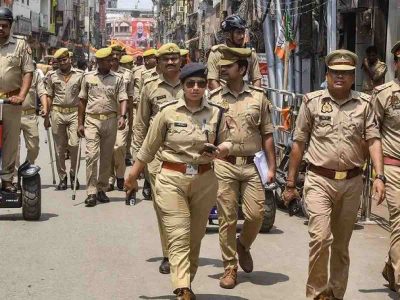The Delhi Police have observed a steady rise in the number of women involved in the city’s narcotics trade, with several stepping into leadership roles traditionally held by men, Patriot has found. Officers say the shift is partly due to the arrest of male family members—husbands, sons, and brothers—leaving women to take charge of existing networks.
Although women have not become the dominant force in drug trafficking, police officials say their presence has expanded in recent years. These women are no longer confined to low-level roles but are increasingly managing logistics, finances, and supply chains across Delhi and neighbouring states such as Himachal Pradesh, Uttar Pradesh, Punjab, and Haryana. Their involvement has become particularly advantageous, as women typically move more freely than men and statistically have fewer prior criminal records.
One woman currently under police surveillance is known across West Delhi’s party circuit as a key supplier of cocaine and MDMA. Described by investigators as well-spoken and discreet, she has evaded arrest on multiple occasions.
“Sometimes she delivers the drugs herself, but she’s very cautious,” said an officer familiar with the case. “She now primarily finalises deals and instructs her men to deliver the product. Direct deliveries are rare and happen only through trusted references.”
The woman, believed to be in her thirties, has used several aliases and is known to operate across club circuits in West Delhi. Police say she represents a new class of traffickers who are difficult to detect, harder to trace, and well-adapted to changing enforcement tactics.
Police data show steady increase
According to official records, 211 women were arrested in 188 separate narcotics cases in Delhi in 2024 under the Narcotic Drugs and Psychotropic Substances (NDPS) Act, 1985. All involved commercial quantities. Ganja was seized in 98 of these cases, while heroin was involved in 82.
The highest number of cases were registered in West Delhi (22), followed by Shahdara (20), Outer North (19), North West (18), and Dwarka (14).
A senior police official noted that although certain districts show more activity, female drug traffickers operate citywide and beyond. “Most drug runners have much of their clientele based in South Delhi, or in other urban sectors beyond the capital,” the official said.
Many of the women arrested, the officer said, come from economically disadvantaged backgrounds and were drawn into the trade due to financial pressures or after the incarceration of male relatives. Bootlegging often served as an entry point, providing access to distribution networks.
“The infrastructure was already there,” said another officer. “Many women stepped in after their husbands or sons were arrested. They’re more discreet and extremely efficient.”
Older women taking leadership roles
More than half of the women arrested in 2024—over 54%—were between the ages of 40 and 85. Nearly 6% were between 60 and 85. While many initially worked from home, packaging small quantities of drugs, some now run their own syndicates.
One such figure is a 55-year-old woman known locally as ‘Aunty’. According to police, her business operates largely through referrals. She communicates with clients exclusively over WhatsApp and deliberately avoids keeping large consignments. Deliveries—which commonly include marijuana, heroin, or synthetic drugs—are handled by delivery riders or acquaintances who often remain unaware of the contents they carry. Occasionally, she makes deliveries herself using her scooter or car. Additionally, her bootlegging network stays particularly active on dry days when alcohol sales are restricted.
Another example is Raj Rani, an 85-year-old woman from Inderpuri. Involved in the trade since the 1990s, she has been arrested multiple times and is listed in police records as a ‘bad character’—a designation reserved for habitual offenders. Last year, she was caught twice with heroin.
In Bhalswa Dairy, 43-year-old Taslima—also known as Putty—allegedly operated a heroin supply network for more than a decade until her arrest in June 2024. Police say she took over the trade after her husband Munawar and son Nawab were jailed.
“She’s like a don here,” said a resident. “Everyone knows what she was doing, but people are scared.”
According to officers, Taslima was caught with 400 grams of high-purity heroin. At the time of her arrest, she had allegedly accumulated assets worth nearly Rs 2 crore. Six properties were frozen, and a Hyundai Creta suspected of being used for deliveries was seized. Her son Nawab is currently absconding.
Courier networks remain active
Women are also being used to move consignments between cities. In February 2024, 58-year-old Santosh was arrested near the GT Karnal bypass with 2 kilograms of high-grade hashish—popularly known as Malana Cream—hidden in her clothes.
Also Read: Yip Yew Chong returns to his favourite canvas – Lodhi Colony
Formerly a jewellery courier in Karol Bagh, Santosh began smuggling drugs after being approached during the pandemic by a man from Nepal in Manikaran, Himachal Pradesh. He offered her Rs 40,000 per kilogram to transport the consignment. She reportedly made regular runs to cities including Surat and Amritsar.
“She looked so frail and harmless that no one would suspect her,” said an officer. “It took us months of surveillance to build a solid case and catch her with the consignment.” Her alleged supplier remains untraceable.
In 2022, police broke up a family-run operation involving Seema (45), her sister-in-law Meenu (38), and neighbour Kajol (25). The three women were arrested with 550 grams of heroin. Seema allegedly assumed control after her husband’s death and gradually involved the others. Their male associates—including Kajol’s brother Deepak, a repeat offender—were also linked to the group. Several arrests were made, though some suspects remain at large.
Investigative challenges persist
Officers say female-led networks are harder to investigate. Many of the women have no prior criminal records, and few use the drugs they sell—making them less likely to draw attention.
“They don’t fit the stereotype,” said one officer. “Most don’t use the drugs themselves, so they rarely slip up. They operate quietly at night.”
 Gender-specific legal constraints further complicate law enforcement efforts. Under Indian law, police cannot arrest a woman between sunset and sunrise without prior approval from a magistrate, except in exceptional circumstances.
Gender-specific legal constraints further complicate law enforcement efforts. Under Indian law, police cannot arrest a woman between sunset and sunrise without prior approval from a magistrate, except in exceptional circumstances.
“This makes raids harder to plan and execute,” the officer said. “We need airtight cases and often have to bide our time.”
As Delhi’s drug economy evolves, the growing role of women is forcing authorities to adapt. With discreet operations, close-knit referral networks, and a shift in leadership dynamics, these women are quietly reshaping the city’s narcotics trade.





